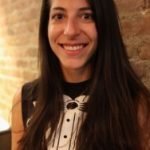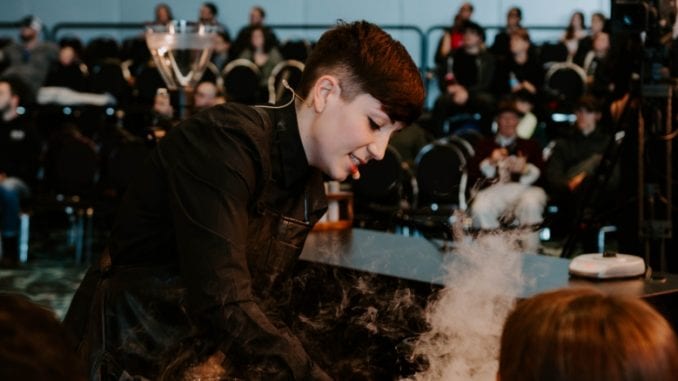
2019 USBC champ Sam Spillman talks to us about her first coffee job, being mentored by 2014 champ Laila Ghambari, and letting out a few curse words in her very first barista competition.
BY ASHLEY RODRIGUEZ
BARISTA MAGAZINE ONLINE
Photos by Paige Hicks
Sam Spillman had it. If you look at the points breakdown of all the competitors during the 2019 United States Barista Championship, Sam was heads above everyone else. She finished first in both the semifinal and finals rounds, with a 25+-point buffer between her and second place.
Now, as Sam gets ready to represent the United States at the 2019 World Barista Championship in Boston in April, we took a moment to talk to her about her coffee beginnings, her very first coffee competition, and what she’s learned about herself through her years in the industry.
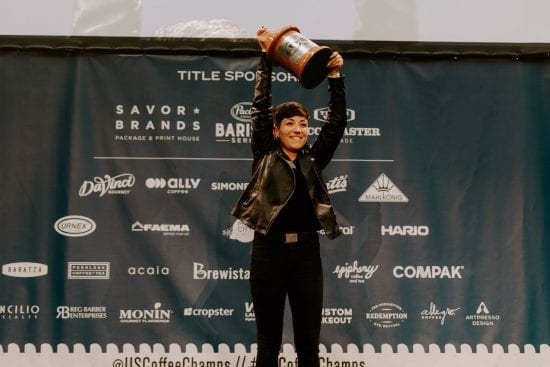
Ashley Rodriguez: How did you get into coffee? How did you get from your first barista job to your current role at Dillanos?
Sam Spillman: My first barista job was at a little café in Coeur d’Alene, Idaho (Java on Sherman), when I was 17. I think what I loved most about coffee in the beginning was the community surrounding it; I liked being where other people were.
At 18 I moved to Seattle for college. I immediately sought a job in the coffee industry. I got a job almost immediately (at Ladro Roasting), and my head trainer just happened to be Laila Ghambari.
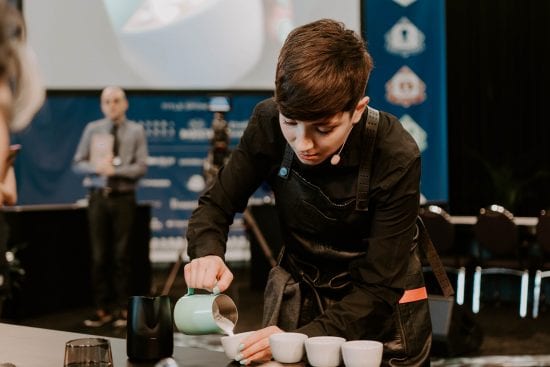
Meeting Laila and being trained by her inspired and challenged me to dig deeper into coffee. When Laila accepted a position at Cherry Street Coffee House, she invited me over to help build a training program. At this time, Cherry Street was using Dillanos Coffee. It was here where we established a relationship starting with competition. Two years later I had graduated college and fallen in love with Dillanos’ ethos; they offered me a position as their lead education specialist. And that brings us to today.
Tell us about your very first barista competition. How has your approach to competition changed and evolved since then?
My first competition … did not go well. I called time at 15:59 and may have said a curse word or two during my presentation. Needless to say, I have changed everything about my approach. The only things that remained the same were my love for coffee and passion to compete.
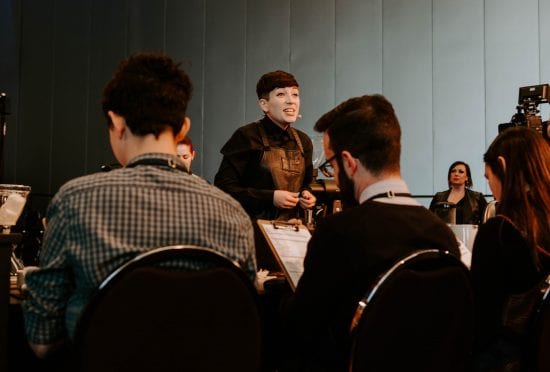
Can you talk more about your competition coffee? How did you approach choosing, roasting, and serving it to the judges?
I had the opportunity to go to La Palma y El Tucan in Colombia for the first time, in order to choose a coffee for competition. My team and I cupped dozens of coffees that were all truly beautiful. There was one coffee that jumped out at me and I couldn’t help but to keep going back to it. That’s when I knew that that Natural Lactic Gesha was the one.
When we got the coffee home, Phil Beattie roasted over 30 sample roasts, all varying slightly in the rate over rise and finish temperature, until we found one that me, Phil, and Kyle Ramage could agree on. We came to competition with four different roasts and tasted them during my practice time. With my routine being centered around taking the judges back to that cupping experience we had in Colombia, I chose the roast that most captured the qualities we experienced on that cupping table, to share with the judges.
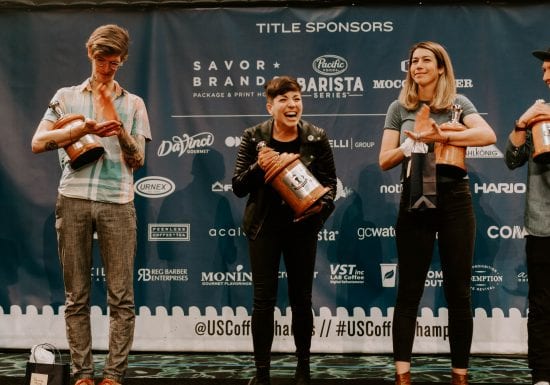
How did you prepare? Any advice for other competitors?
I prepared by conceptualizing a base theory which I worked from. After that it was honing in my technicals by repetition of movements, i.e., clearing the EK43s the same amount of times, dosing and tamping, rags in the right places … things that seem second nature, but are often overlooked when under pressure. Then, building a signature beverage from that idea that would highlight the coffee and the concept that I wanted to communicate. This took a dozen failed recipes. Mind you, I did none of this alone.
So if I could give any advice to competitors, count on sleepless nights, a lot of failures, but by utilizing the community and resources that surround you, it becomes a lot easier when you share the workload with those that want to see you win.
What do you think worked especially well in this routine? What are some big lessons you’ve learned in your years of competing?
My entire routine was focused on going back to how the coffee tasted, and the coffee tasted amazing … especially that day. One of the big things I’ve learned is that progress isn’t always giant leaps, sometimes it’s inches, but as long as you are working hard to move forward, that’s all that matters.
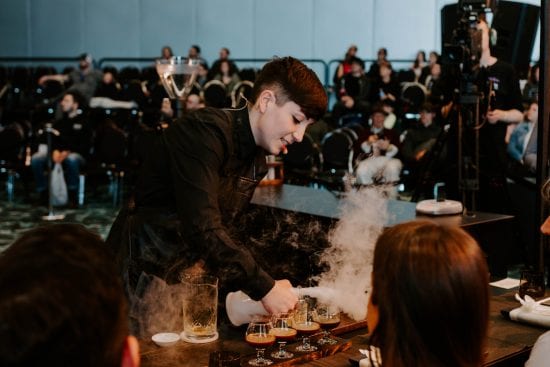
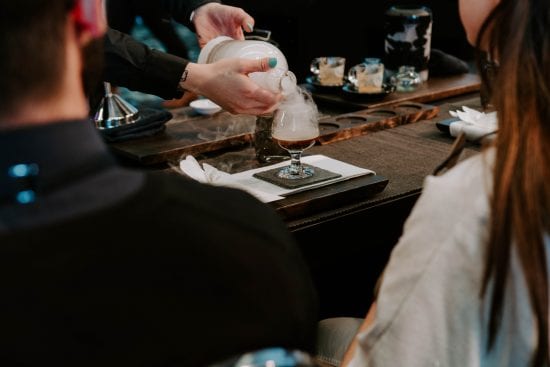
Can you talk about the milk distillation method you used for your routine? Why did you choose to do this and how did it make your milk drink distinct?
Milk is 85 percent water, so I wanted to remove this ingredient leaving me with a sweeter, richer milk. Mind you, I did not come up with this idea. I was inspired by Benjamin Put, a Canadian competitor who competed at WBC. Distilled milk is a new thing that is happening in the coffee industry, but this is not why I ended up going with it. I used it because it paired best with my espresso, augmenting the flavors into peach, vanilla, and malt chocolate.
What do you want your win to signal about the future of coffee competitions? What do you want people to take away from seeing you succeed?
If coffee competitions are a reflection of the coffee industry as a whole, then the future of coffee has to be more inclusive, because coffee is inclusive. Coffee is people … all people.
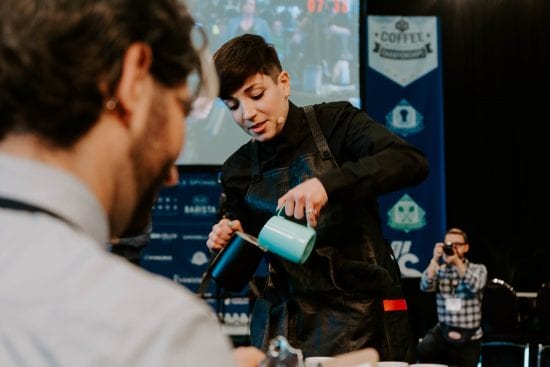
Anything is possible. A 17-year-old girl from a small town in Idaho had a dream to become something in coffee. And through hard work, determination, and relying on a community that believes in her, that dream came true.
How will you prepare for Boston? Will you change anything to your routine?
Work harder, focus more, and elevate my routine to be ready for a world stage.

